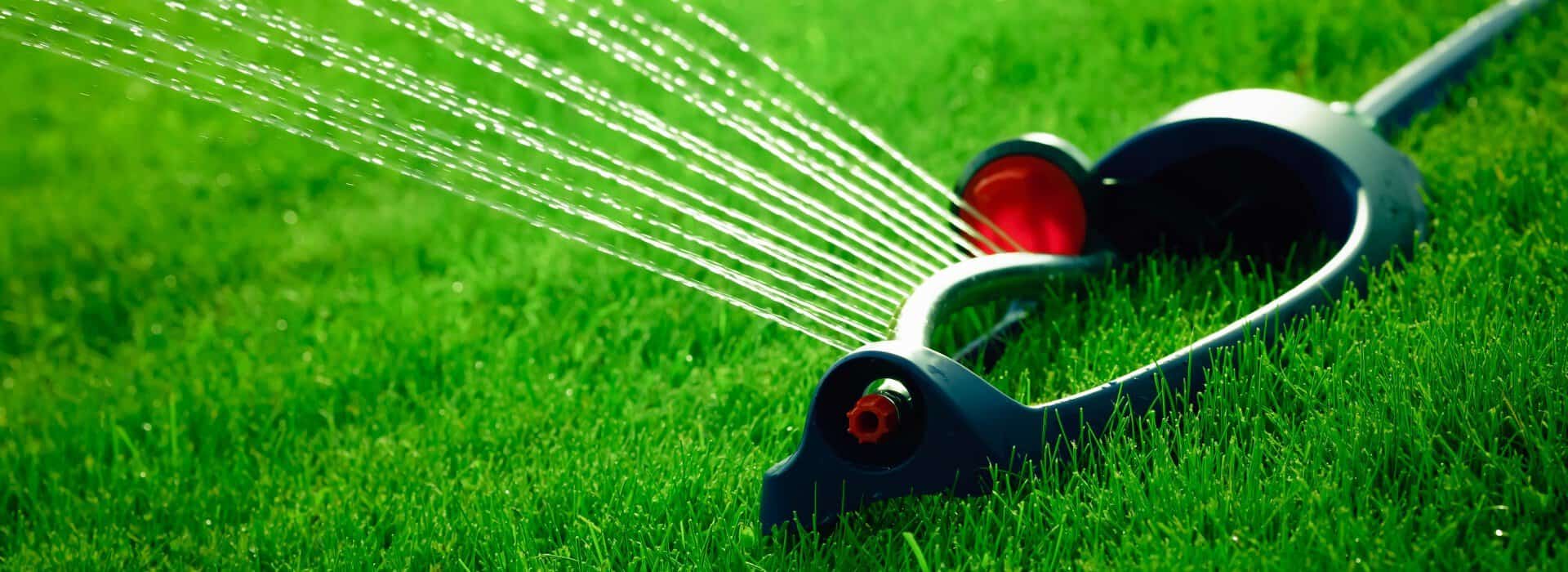Your instant lawn has been supplied to you in perfect, living condition and we are here to help you keep it alive and healthy. Contact us for advice and products. After laying your instant lawn try to keep off it for the first two weeks to allow it to establish and follow these instructions.

Instant Lawn After Care
Watering
Water is vital to the success of your new lawn. We recommend using oscillating sprinklers for good coverage and maintain thorough watering until the grass is firmly rooted, paying particular attention near concrete areas that will draw moisture from the lawn. In winter minimal watering is required but during warmer months apply water for 20-30 minutes morning and evening each day for the first 14 days. In very hot conditions increase this to 20-30 minutes four or more times a day. Watering can then be gradually reduced to every 3-7 days in the summer. No further watering is required in the cooler months.
If there are any signs of your lawn drying out or shrinking it is not getting enough water. Apply water immediately. Once these areas die they cannot be revived and will need replacing. These problems do not exist on well-watered lawns. They are a result of poor irrigation during summer months.
Mowing
Different varieties of grass need to be mown at different heights to keep the grass healthy and looking great. Always use a catcher and ensure mower blades are sharp.
Dwarf Rye/Fine Fescue
Mowing should take place when the grass is firmly rooted and reaches 40-50mm high. This can occur anytime from one week after laying depending on the time of year. For the first few mows, trim lightly and try not to remove more than a third of the growth at any time. Following this, gradually lower the blades to an ideal cutting height of 25-30mm and mow regularly to encourage the growth of a denser lawn. Infrequent mowing will create a thinner sward that will allow the invasion of weeds and moss.
Tall Fescue
Mow Tall Fescue two weeks after laying or sooner if it has grown rapidly. Mow down to an ideal cutting height of 60mm or the highest setting on your mower. It is important to mow Tall Fescue higher than other grasses. If you mow it too short it will die. Tall Fescue prefers a longer period between mows to keep it healthy. Ensure mower blades are sharp as blunt blades will damage the end of the leaf and leave an untidy finish.
Fertilising
A high- quality, slow-release fertiliser should be applied after 4-6 weeks when grass growth slows and your lawn begins to fade. Once your lawn is established, maintain regular feeding. Enquire about the best fertiliser to use on your lawn. Be sure to read all instructions carefully and apply fertiliser accordingly.
We recommend using a fertiliser spreader to ensure an even application.
Weed control
Our lawn is supplied to you treated and weed free. However, weeds will appear in your lawn due to dormant weeds in the ground or through wind, birds or contaminated lawnmowers.
Established lawns can be treated with a selective weed killer anytime during active growth but during periods of drought the weed killer will not be effective and may scorch the lawn.
For on going weed control we recommend you see us for accurate advice on chemicals and spraying practices.

